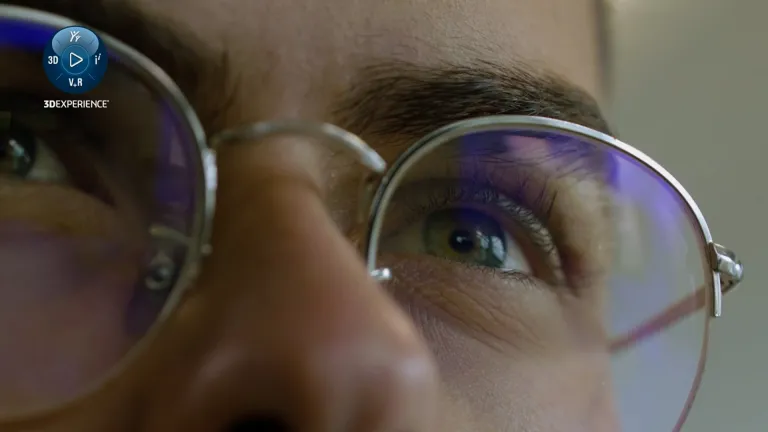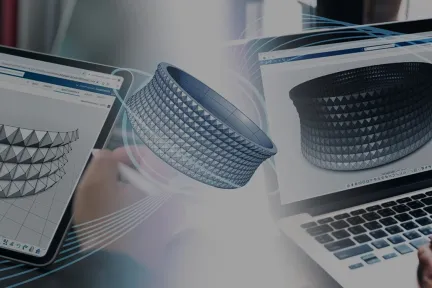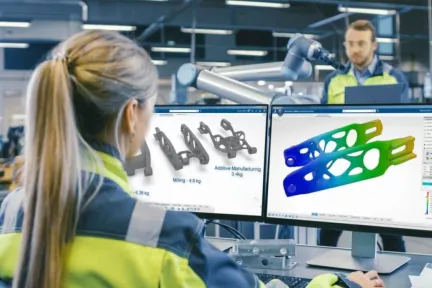The 3DEXPERIENCE platform
A Game Changer for Business and Innovation
Discover how a single platform for your entire organization helps you reimagine products and experiences, and rethink business processes and operations.
One platform, endless possibilities
3DEXPERIENCE (3DX) is a business and innovation platform that provides organizations with a holistic, real-time vision of their business activity and ecosystem. It connects people, ideas, data and solutions in a single collaborative environment empowering businesses – from startups to large enterprises, to innovate, produce and trade in entirely new ways.
The platform acts as a single version of the truth to anchor outcome-based processes and capture all activities in one place. It securely connects individuals, teams, departments and external collaborators working together to transform ideas into innovative products, services and experiences.
Explore the differences making the 3DEXPERIENCE platform unique
- A Unified Environment
- Virtual Twin Experience
- Sustainable Innovation
- On the Cloud
- Marketplace
- Role-based
A Unified Environment
The 3DEXPERIENCE platform connects an organization’s entire ecosystem – people, ideas, data, and processes, using a single unified environment. It combines knowledge and know-how using a unified data model and ontologies, supports all disciplines and acts as a single version of the truth. As a unified collaborative environment, the platform brings together all participants and enables secure, real-time collaboration on any device. Its user experience brings web-style simplicity and speed to individuals, teams, and departments even when dispersed across different locations.
Powering Virtual Twin Experience
The 3DEXPERIENCE platform enables companies to create and visualize virtual twin of products, processes, and operations. Companies represent complex systems from cars to cities to human hearts using the power of science-based modeling and simulation, data science and collaboration. With virtual twin experience powered by the 3DEXPERIENCE platform, companies enable a closed-loop connection between the virtual and real worlds allowing them to exploring all possibilities and scenarios. As a result, businesses design and test products and experiences from inception to market delivery and usage, before actually producing them.
A Catalyst for Sustainable Innovation
The 3DEXPERIENCE platform let people imagine, design and test the radically new products, materials and processes needed in tomorrow’s more sustainable economy. The platform helps companies re-invent their value creation process, leap from product to experience to realize radically new sustainable innovations and minimize emissions. It transforms collaboration and relationships between sellers, buyers and customers to meet sustainability goals.
A cloud-based platform
With 3DEXPERIENCE Cloud platform, companies break free of IT constraints and bring together all aspects of their business on a single cloud-based platform. It provides instant access to the latest catalog of apps and online services to collaborate with teams, clients and external collaborators. The 3DEXPERIENCE Cloud platform helps businesses of any size get innovations and experiences to market faster with proven outcome-based processes.
Marketplace
The 3DEXPERIENCE platform connects businesses to an ecosystem of industrial service providers. With the 3DEXPERIENCE Marketplace, designers and engineers find source-able 3D components offered by qualified suppliers from a comprehensive catalog of millions of parts. They can also upload designs and get quotes for their manufacturing projects reducing friction along the way or hire engineering experts specialized in digitalization, design and certification of products.
Role-based platform
The 3DEXPERIENCE platform is a completely new method of working, not just a set of software programs. You may choose from a variety of Roles based on what your needs and skill set are. A role equips you with the applications you need to work effectively and efficiently. By using the 3DEXPERIENCE platform, you enhance your work process and unleash your full creative potential to transform ideas into innovative products, services and experiences.
Validation-Ready for GxP Compliance
The 3DEXPERIENCE platform is the only end-to-end solution designed for process industries, with seamless deployment capabilities on the cloud in GxP spaces, as a SaaS offering.
How our customers are driving innovations
Discover how leading companies are using our 3DEXPERIENCE platform to imagine, design, and test the radically new products, materials, and processes needed to create a more sustainable world.
More on the 3DEXPERIENCE platform
Join the 3DEXPERIENCE platform user community
Connect with peers, experts, and partners all around the world to share best practices and expertise.
Buy online
Get started today, because your best ideas can't wait. Make it come to live on the 3DEXPERIENCE platform.
Contact Sales
Let's talk about your needs. Speak with a 3DEXPERIENCE platform expert.








